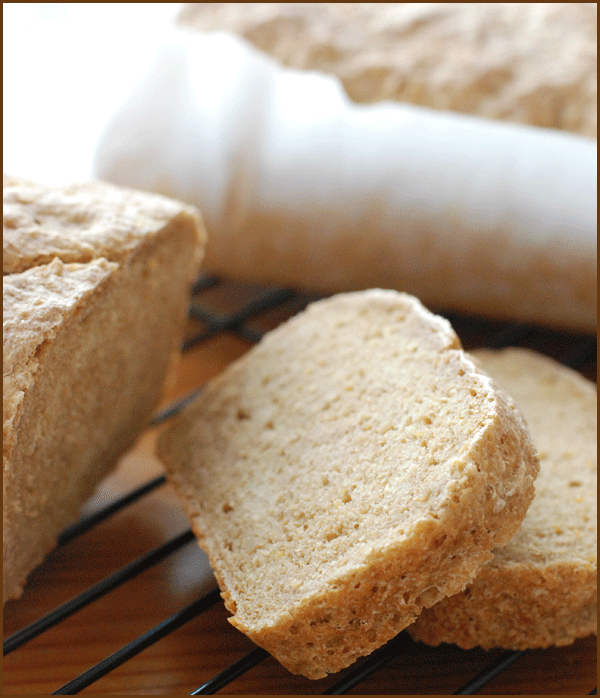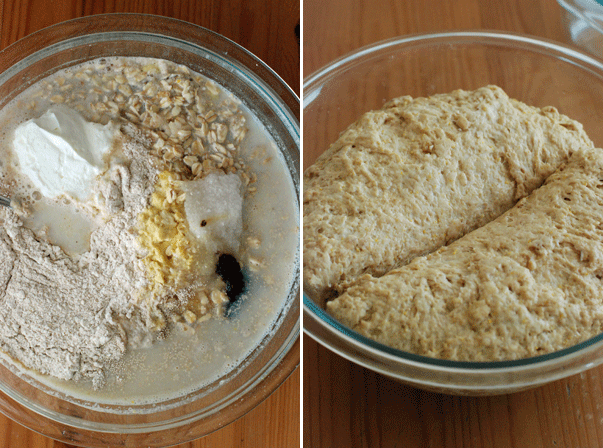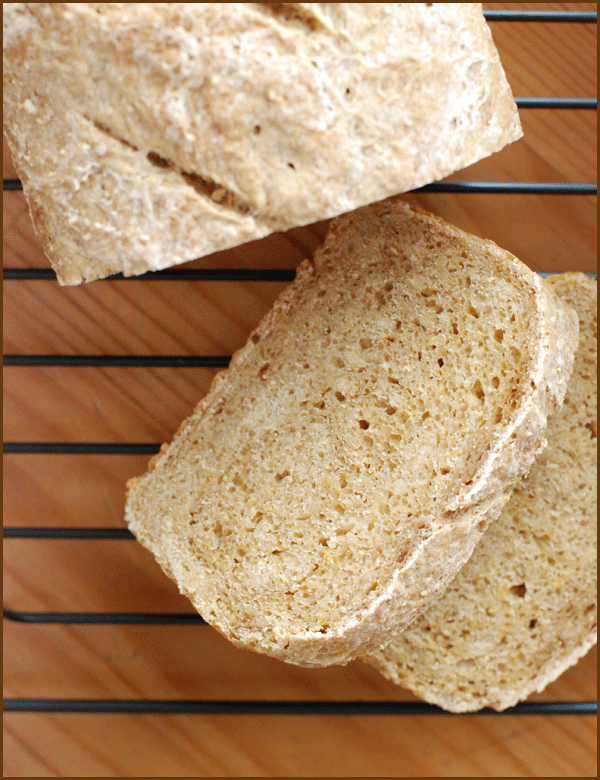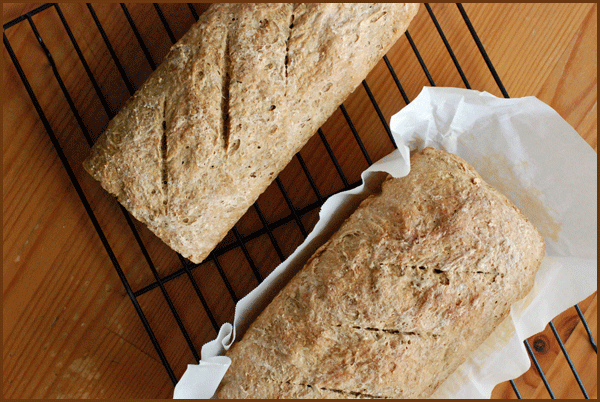 The Dupont Circle farmers' market has a bread stand. They make all sorts of bread, from tangy sourdough to crusty boule to grainy raisin walnut and beyond. The line to buy bread at the market starts forming around 8:30, and by 9am, it's pretty darn long. People spend 30 minutes just waiting in that line. I think it's kind of crazy.
The Dupont Circle farmers' market has a bread stand. They make all sorts of bread, from tangy sourdough to crusty boule to grainy raisin walnut and beyond. The line to buy bread at the market starts forming around 8:30, and by 9am, it's pretty darn long. People spend 30 minutes just waiting in that line. I think it's kind of crazy.
Don't get me wrong, the bread is good. And in summer, when our apartment is about 100 degrees hotter than the temperature outdoors, I want my oven blasting on 450 for a couple hours about as much as I'd like to climb inside and sit for a while. But pretty much every week of fall, winter, and spring, I make my own bread. I really don't understand why, when there's perfectly good flour in my pantry and fine water flowing from the tap, I'd give up the pleasure of making my own bread dough. It's tacky, stretchy, sticky, and smells alive. I love dough.
Take, for instance, this struan, a seemingly modest loaf that's got as much other stuff (cornmeal, oats, yogurt, molasses) as it's got flour and water. Struan is happy bread. It somehow manages to be rich and still wholesome. And it makes what quite simply is the best piece of toast I've ever had.
The recipe comes from Peter Reinhart's book, Artisan Breads Every Day. This book is awesome -- it's where I found that amazing babka recipe. Who knows what else I'll find in this book? For now, I'm sticking to this struan. You might want to give it a try, too.
Struan Bread Adapted from Peter Reinhart's Artisan Breads Every Day Makes 2 loaves
5 cups unbleached bread flour 1/2 cup coarse cornmeal or polenta 1/2 cup oats 3 tablespoons wheat or oat bran 1/4 cup brown sugar 2.5 teaspoons salt 2 tablespoons yeast 1.5 tablespoons molasses (Reinhart calls for honey or agave, which I'm sure also work -- I like the stronger flavor of molasses) 1.5 cups lukewarm water 1/2 cup buttermilk, milk, or yogurt (I used half yogurt and half buttermilk)
In a large mixing bowl or stand mixer bowl, combine everything. (How easy is that?) Use the paddle attachment on low speed for about 2 minutes until everything is well-combined. Let the dough sit for 5 minutes to fully hydrate the flour.
Mix again with the paddle attachment for about 2 more minutes, then let rest again. Transfer onto surface sprinkled liberally with flour, and begin to knead for 2-3 minutes total, adding water as needed, until dough is firm but still tacky.
Oil a large bowl, to be used for rising. Take dough, stretch, and fold back over itself. Repeat in the other direction. Form into a ball. Roll dough in oil to coat, rest in bowl, and let sit covered for 10 minutes. Repeat stretch-fold-rest process twice more. When dough has been stretched and folded three times, set in bowl, cover, and let rise in about 2 hours on the counter or overnight in the fridge.
If refrigerating, remove 2 hours before baking. Butter two loaf pans. Divide dough in half. Take one half, and roll into an 8x5 rectangle. Roll along the 5-inch side into a log, pinch seam, and let proof in loaf pan about 1.5 hours, until doubled in size. Repeat with other half. Meanwhile, preheat oven to 350.
Bake loaves for 60 minutes total, rotating pans halfway through, and cool completely before cutting (about 1 hour).


